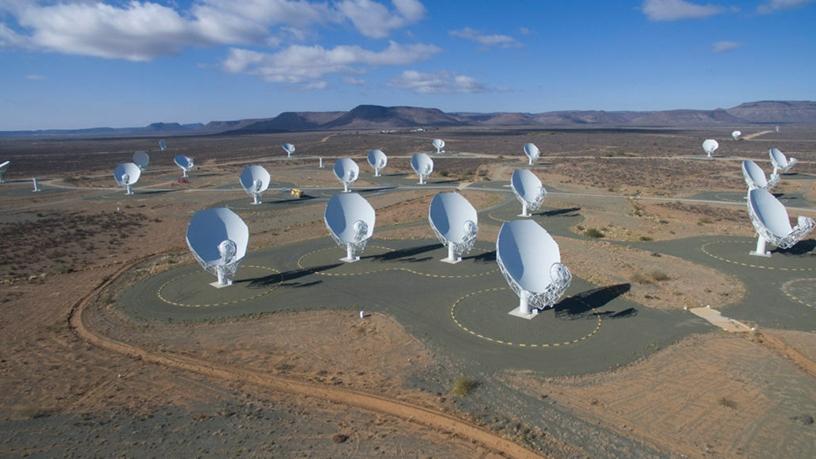
South African astronomers have received a major big data boost with the opening of a new facility at the University of Cape Town (UCT).
Claimed to be a first of its kind, the visualisation facility has been launched by the Inter-University Institute for Data Intensive Astronomy (IDIA) at UCT, where astronomers from around the country can explore their data and find answers to some of the biggest questions about the universe.
SA is set to face a shortage of data science skills when the Square Kilometre Array (SKA) goes live. In anticipation of this shortage, a partnership of three of the country's universities was formed in 2015.
The UCT, University of the Western Cape and North-West University joined forces to form the IDIA. Data scientists will be required to interpret and analyse the vast amount of data that will be produced by the SKA.
According to the Department of Science and Technology, for "healthy participation" in the SKA, SA will need 200 data scientists when the project is live.
The SKA is not a single telescope, but a collection of telescopes or instruments, called an array, to be spread over long distances. The SKA is to be constructed in two phases: phase one in SA and Australia; phase two expanding into other African countries, with the component in Australia also being expanded.
It will conduct transformational science to improve our understanding of the universe and the laws of fundamental physics, monitoring the sky in unprecedented detail and mapping it hundreds of times faster than any current facility.
Professor Russ Taylor, director of IDIA and the SKA research chair in radio astronomy at UCT and the University of the Western Cape (UWC), comments: "Visualisation presents one of the biggest challenges in this era of big data astronomy.
"We have these really big datasets which are very rich and very large, and different in character to the kinds of datasets we have traditionally been working with."
The purpose of the new visualisation laboratory is to provide a facility for IDIA researchers from UCT, UWC, North-West University and the University of Pretoria to work with and experience their data in an immersive environment.
According to IDIA, this will allow researchers to answer fundamental questions that the SKA project seeks to understand: what is the nature of reality; how did the universe - and the stars and galaxies within it - form and evolve; can we map a complete history of time; and are we alone?
It notes this will ultimately change our understanding of the universe and help to illuminate the unknown.
To fully benefit from the opportunities presented by big data, astronomers need a space to engage with these large volumes of data where they can explore, identify and examine patterns in the universe, says IDIA. The tools researchers previously used to work with their datasets no longer meet the needs of big data science, it adds.
"Researchers don't want to look at little bits of big data. We want to look at as much of the data as we can and at a full resolution to get the big picture," Taylor says.
The new IDIA Visualisation Laboratory facilitates this kind of large-scale analysis through three innovative devices - a grid of four television screens, affectionately known as WALIE (the Wide Area Large Interactive Explorer) - that allows researchers to look at large datasets in high definition.
It also has a curved 1.8-metre panorama display in which a researcher can sit and experience their data in an interactive environment; and a virtual reality platform enabling researchers to become one with the data in a three-dimensional space.
IDIA explains that these technologies support the purpose of the laboratory, which is to facilitate developers and researchers working together to develop the technology to support big data research, and provide a platform to test, experiment and build new software systems.
This synergy will facilitate an effective strategy for processing of the data, received from the SKA and its precursor telescopes, in South Africa, rather than abroad, it concludes.
Share